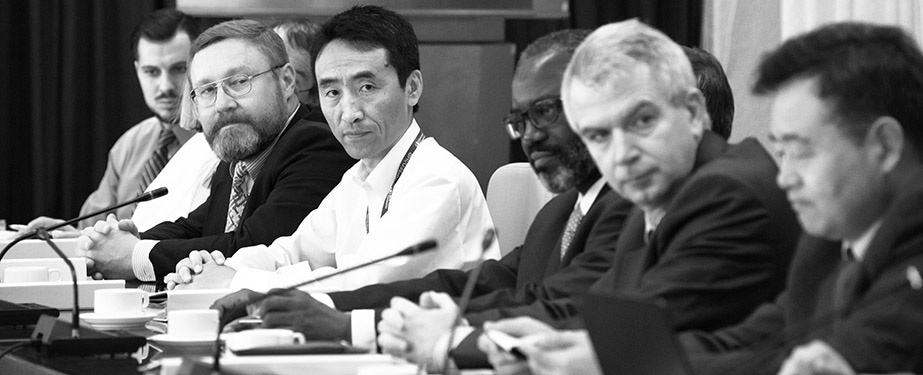JEEs: Charting the Course for Global Preparedness
February 28, 2018

Joint External Evaluation Team discussing preliminary results of Vietnam’s self-evaluation with Vietnam's General Department of Preventive Medicine (CDC staff pictured: Daniel Stowell and Peter Rzeszotarki). Photo courtesy: Alex Costa, WHO
Public Health Threat:
In October 2017, the U.S. and more than 60 other countries declared their support for extending the Global Health Security Agenda (GHSA) until 2024.
The GHSA was launched in 2014 to establish a set of common international standards to
- Prevent and reduce the likelihood of outbreaks – natural, accidental, or intentional;
- Detect threats early to save lives;
- Respond rapidly and effectively using multi-sectorial, international coordination and communication.
The Kampala Declaration, which was issued following the 4th Annual High Level GHSA Ministerial Meeting in Kampala, Uganda, reaffirmed the global commitment to a world safe and secure from threats posed by infectious diseases, but also acknowledged that “significant work remains to fully achieve and sustain health security.”
In 2014, more than 70% of countries remained underprepared to handle a crisis, leaving dangerous gaps in the world’s health security. To help close the gaps, countries needed a better way to identify and direct resources toward the most urgent needs within their health systems.
In 2016, the World Health Organization, working with CDC and Global Health Security Agenda member countries, developed the Joint External Evaluation (JEE) tool. The JEE is a voluntary, multi-sectoral, and comprehensive process to evaluate a country’s capacity to prevent, detect, and rapidly respond to public health risks. The JEE is a standardized assessment and evaluation process that looks across 19 technical areas in line with the required IHR (2005) core capacities. JEE results are shared openly and can help countries use limited resources wisely.
Response:
JEEs are designed to:
- Establish a baseline measurement for a country’s capacity
- Inform national policy and planning
- Target resources to areas of greatest need
- Track progress toward IHR compliance
- Highlight priority areas for improvement
When a country requests a JEE, the country conducts a comprehensive self-assessment using the JEE tool. Then a team of international experts is sent to independently validate the assessment. The JEE process generates a report that captures priority actions for improvement and measures health security capabilities in the 19 technical areas on a 1-5 scale, as shown below.
- Status level 1: No capacity
- Status level 2: Limited capacity
- Status level 3: Developed capacity
- Status level 4: Demonstrated capacity
- Status level 5: Sustainable capacity
Impact:
The standardized, transparent results from JEEs are making it easier for countries to identify gaps and set priorities. As of January 2018, 67 countries have completed JEEs, and CDC experts have participated in ~60% of these.
Importantly, JEEs help countries develop costed action plans, which can open the door for partnership by matching needs with resources. As one of many examples, after Ghana’s needs were identified through their JEE assessment, the Korea International Cooperation Agency (KOICA) dedicated over $7M dollars, working alongside CDC to strengthen Ghana’s capabilities in the areas of laboratory, workforce development, and emergency response.
By measuring progress on specific targets, JEE results help us understand where and how improvements are being made, and point us in a clearer direction toward a world safe and secure from infectious disease threats.